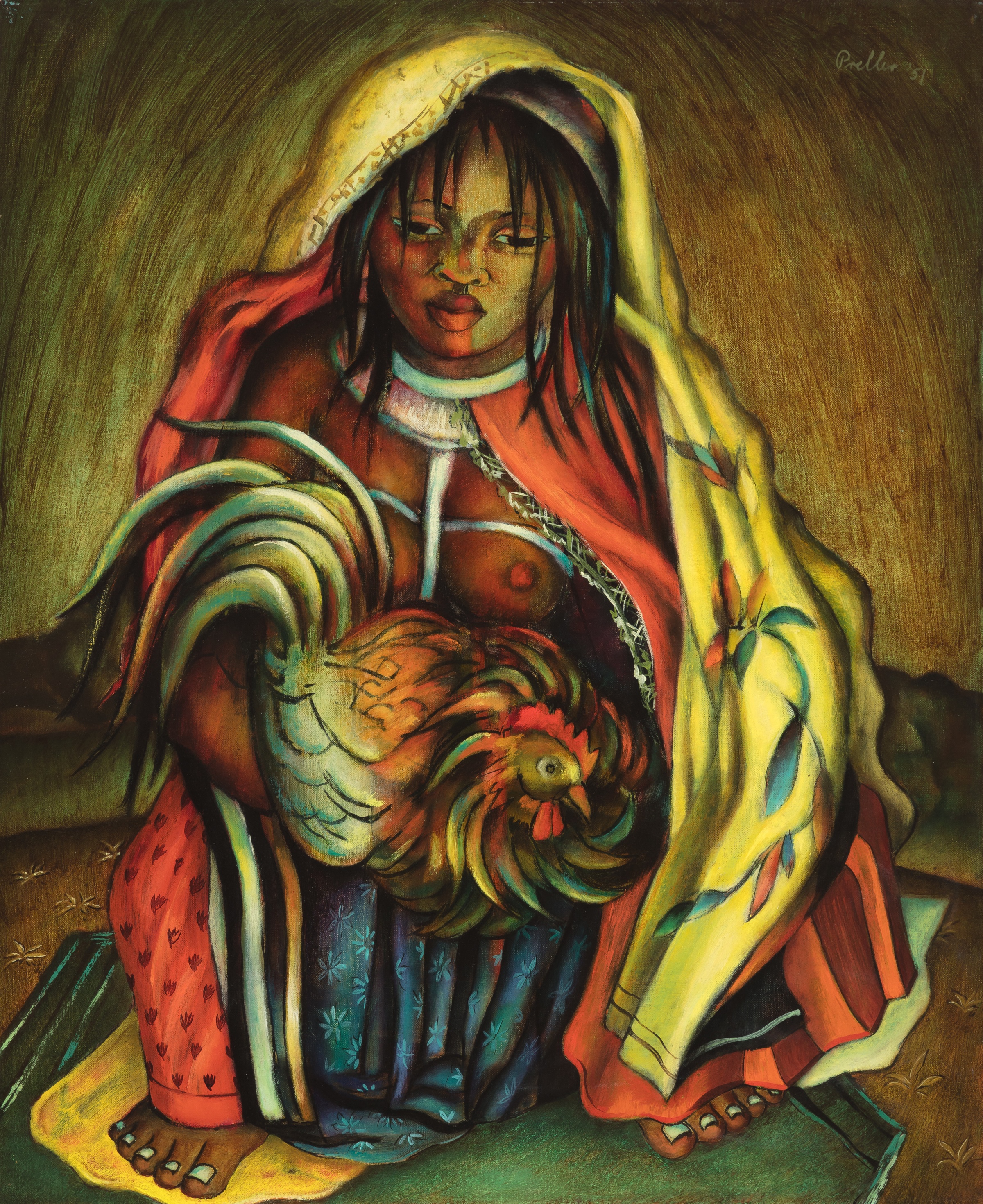Alexis Preller
Though it might dimly reflect reality’s image, The Offering is a work of fiction. For all the apparent realism of its figuration, the scene transcribed is one of imagined mythography. Preller's travels through the African continent – to central Congo, Egypt, and the islands of the Seychelles and Zanzibar – furnished his imaginings of a timeless tradition. “From his observations of tribal life and ritual,” Esme Berman wrote, “from the inscrutable surviving ruins, fetishes and symbols, from the art of the primeval past, he spun a myth awakening a forgotten tribe and called up visions of its origins and gods.” Preller’s experience of Africa, it appears, was more often romantic than real.
In The Offering, Preller revisits a similar painting of the same name made in 1938. While the works differ in figurative style and in the sensibility of their brushwork, they share a compositional premise. In both, a bare-breasted woman presents a fowl as offering to the viewer, who is made to play the ambiguous role of god.
b.1911, Pretoria; d.1975, Pretoria
Only a single, modest monograph of Alexis Preller’s paintings was published in his lifetime; his work largely regarded as too enigmatic to find broad appeal. It evaded the categories of modernism, being neither surrealist nor symbolist, but surreal and symbolic. In Preller’s paintings, recurring objects and figures appear as unclear signs, their significance known only to the artist. He referred to these visual motifs as ‘household gods’, as talismans of creative impulse. An egg, candles, bowls and shells – these are the humble totems around which his compositions are arranged. In subject, Preller pursued an imagined exotic. Where many of his early paintings describe a mystical Africa, his later works considered the iconography of ancient Greece and early Christianity. In all, he looked for metaphors of a spiritual innocence, for animism and magical thinking. He is remembered, in the words of art historian Esme Berman, for “the brilliance of his colour, the luminous magic of his imagery and the extraordinary richness of his independent vision.”
